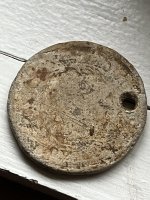A
accteam
Guest
Hello,
I was hoping maybe some of the pro's might be able to share a few tips on hunting the beach. So, I'll ask a few of my dumb questions and maybe I'll learn a few tricks.
As for the term, the 'lane'. I read just today, that it means the area between high and low tide. I noticed in some pic's that some people are detecting in the water, either angle high or chest high. Which is best, to start searching first? I've seen the beach on a new moon low and the first time, I could not believe how far out the water went. So, knowing this will happen....is it a good idea to hunt also on the day its a new moon low and if so, where on the sand should you start searching? Because, if its a new moon low...the water is out further then normal....should you walk way out where the sand is flat and has those ripples in it? Last question, I also noticed in certain areas of the beach, there are spots or groupings of gravel, small rocks, etc. These spots are spaced out from each other about 10 feet or so. Is it a good idea to hunt that spot? and why does the gravel, small rocks all collect in such a small area?
Thanks for taking the time to help out a newbie hunter. I know most if not all of my questions where dumb, but I'm trying to get some kind of handle, on this beach hunting. Please also leave any other tips that I might have not asked....thanks and happy hunting
I was hoping maybe some of the pro's might be able to share a few tips on hunting the beach. So, I'll ask a few of my dumb questions and maybe I'll learn a few tricks.
As for the term, the 'lane'. I read just today, that it means the area between high and low tide. I noticed in some pic's that some people are detecting in the water, either angle high or chest high. Which is best, to start searching first? I've seen the beach on a new moon low and the first time, I could not believe how far out the water went. So, knowing this will happen....is it a good idea to hunt also on the day its a new moon low and if so, where on the sand should you start searching? Because, if its a new moon low...the water is out further then normal....should you walk way out where the sand is flat and has those ripples in it? Last question, I also noticed in certain areas of the beach, there are spots or groupings of gravel, small rocks, etc. These spots are spaced out from each other about 10 feet or so. Is it a good idea to hunt that spot? and why does the gravel, small rocks all collect in such a small area?
Thanks for taking the time to help out a newbie hunter. I know most if not all of my questions where dumb, but I'm trying to get some kind of handle, on this beach hunting. Please also leave any other tips that I might have not asked....thanks and happy hunting

Amazon Forum Fav 👍
Upvote
0






